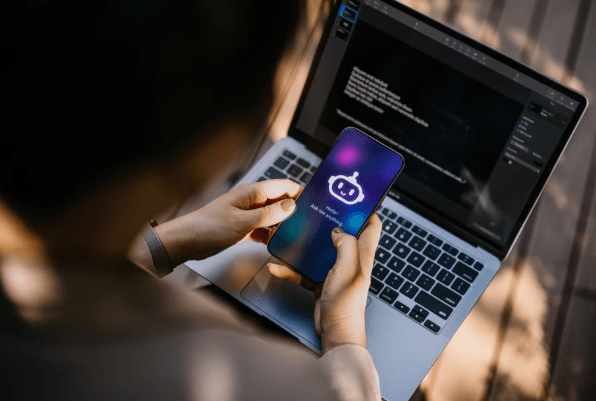By Chelsea Gladden • Edited by Kara McIntyre
AI is redefining search. Without a strong, reputable third-party digital footprint, your brand risks disappearing in today’s competitive online landscape.
Key Takeaways
- Answer Engine Optimization (AEO) is becoming a critical tool for brands to gain visibility and sales via AI-driven platforms.
- Strategic press coverage using SEO-driven keywords enhances a brand’s chances of being recommended by AI tools like ChatGPT.
- Building an affiliate program and optimizing digital presence are key steps for brands to leverage AI and increase their market share.
There’s a celebration going on amongst PR professionals. In an industry that takes on a lot of “no’s” for the coveted “yes” and takes hit after hit as a result of the dishonest agencies, the good “guys” needed some good news. With the ever-changing landscape of media, from print publications folding to all clients needing an affiliate option if they want press to feature their products, PR is now getting clients discoverable in AI.
In fact, without press, most brands do not exist when it comes to Answer Engine Optimization and Large Language Models (LLMs). Press is after its own SEO and uses coveted keywords based on what consumers are searching for, and now those keywords are linking out to those articles in ChatGPT, Gemini, etc.
Why AEO matters now
AI is changing the way people search. Instead of scrolling through Google, shoppers are asking AI engines directly for recommendations. In fact, Small Business Trends reports that 47% of U.S. consumers are shopping directly via AI tools.
Our long time Everything Branding clients are receiving the benefit of consistent press and, as a result, AI recommends their products. For example, when searching for “the best pepper grinder,” our client MannKitchen consistently appears as the number one option, citing the press our team secured as the source. Within ChatGPT, for example, you can also click on the link to see the original article. This widens the audience and views for that article. Press is strategically writing articles catered to traditional Google search and now also for AI, so they can secure more UMVs and higher advertiser dollars, all the while selling products for brands.
A mistake many emerging brands make is assuming shoppers will come without the effort to find them. Starting Google ads too soon generally fails because consumers don’t know the brand exists and aren’t googling it yet, nor interested in a brand they have never heard of. Once the brand starts getting press mentions, Google and Meta ads tend to convert better and now AI search is an added bonus.
How do you get recognized by AI?
Step 1: Secure press coverage
National outlets are now writing with AEO in mind, using SEO-driven keywords and structured content that LLMs can easily pull into answers.
Step 2: Build an affiliate program
With print consistently going away, magazines lost a major source of revenue with print ads. Media outlets got savvy and realized if they are telling their audience what to buy, they should be paid on the sale. Many media outlets now require brands to have an affiliate program before considering them for product roundups.
Step 3: Optimize your website for AI
Beyond press, you can improve your AI visibility through technical updates. In fact, I often run client sites through ChatGPT itself and ask: “What would make this brand show up in AI search?” The recommendations usually include adding schema markup, optimizing metadata, and building authoritative backlinks.
Step 4: Choose the right PR partner
Not all agencies are created equal. I’ve spoken with brands that felt burned by PR partners who overpromised and underdelivered. Here’s what brands should look for:
- Verified testimonials (with names and businesses publicly mentioned; ignore any that are unspecific, like “Shelia M, Beauty Brand” and trust those that can easily be validated by checking if the personal name matches the brand, for example, “Jonathan, owner of Honeydew Sleep”).
- Up-to-date expertise (Does the agency understand affiliate requirements and AEO practices?).
- Flexibility to pivot (digital standards change fast, and agencies must keep up).
Doing a quick Google or AI search on an agency before signing can also reveal whether they practice what they preach. Make sure to differentiate between agencies that make over-the-top guarantees versus what is reality. For example, any agency that “guarantees” the Today Show is not being truthful.
Why DIY PR rarely works
I’ve worked with passionate founders who tried pitching editors directly. While their enthusiasm was clear, most outlets ignored them because editors prefer working with PR reps who understand their timelines, workloads and content needs.
One editor once told me, “I’d rather get one pitch from a PR professional than five emails a day from a founder asking why their sample hasn’t been featured yet.” Acting as the middle person builds trust with the press and ultimately leads to more coverage.
The bottom line
If SEO was the marketing differentiator of the 2010s, AEO is the differentiator of today. From my experience, the brands that invest in press, affiliate readiness and AI-friendly optimization are the ones already showing up in AI answers and getting sales directly from them.
The sooner brands adapt, the sooner AI will recognize them as the go-to choice in their category. Just like the internet boom brought more opportunities, now the AI driven boom is doing the same. It’s a win all around — press is being paid to sell products, brands are finding and selling to their customers and PR agencies are becoming the unsung heroes. And loving it.
By Chelsea Gladden
Chelsea Gladden, CEO and founder of Everything Branding, leads the award-winning agency specializing in commerce-driven PR, AEO and digital marketing. Since 2018, the firm has driven high-authority press to boost brand visibility, including AI-driven and LLM-powered search results.















